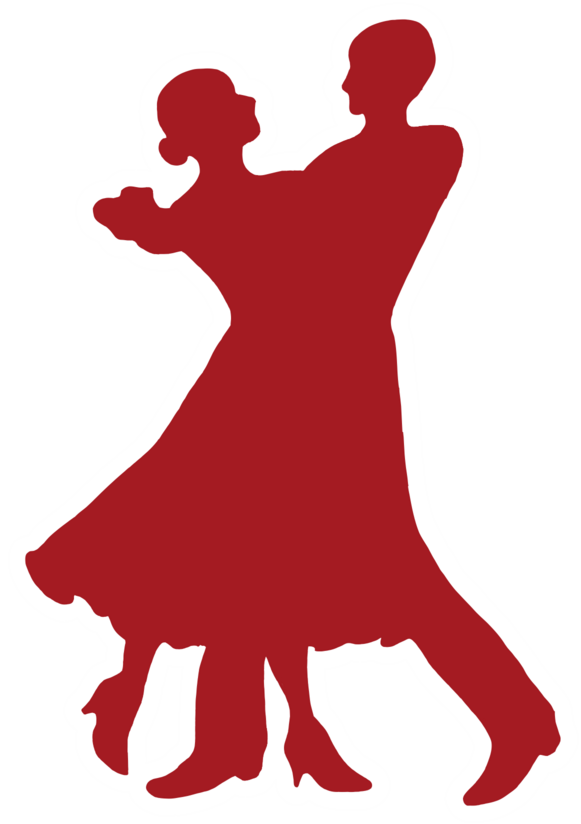Your Shoe Questions, Answered!
Why might I need dance shoes?
Ballroom shoes have a suede sole on the bottom, which travels over the ballroom floor with much less resistance than the sole on a normal shoe. While street shoes are fine for social dance, anyone interested in competing will need to find at least one pair of dance shoes.
What shoes do follows wear?
There are two main types of shoes for follows: latin/rhythm and smooth/standard.
Latin/rhythm shoes
Latin/rhythm shoes have open toes and typically have a strappier look to them. They also tend to have higher and thinner heels than a smooth/standard shoe. For beginners, we recommend shoes with secure straps around the ankles and heels that are both shorter and have a wider base. This will help you to feel more stable as you get used to dancing in heels.
Smooth/standard shoes
Smooth/standard shoes have closed toes and sides, giving them a look more like a pump. They tend to have shorter and wider heels than a latin/rhythm shoe (you will want this when you are taking heel leads!). Again, we recommend lower heels and a wider base for beginners for stability and comfort. Straps are not very important for smooth/standard, as typically the shoe fit is what holds you into a smooth/standard shoe.
It is nice to have both types of shoes if you are dancing all styles, as they are designed for their respective techniques. However, if you can only get one pair, start with latin/rhythm shoes first. Most follows find it is easier to dance smooth/standard in latin/rhythm shoes than vice versa.
What shoes do leads wear?
Leads also have two main types of shoes: smooth/standard and latin/rhythm.
Smooth/standard shoes
Smooth/standard shoes look somewhat like typical men’s dress shoes. The low, wide heel is useful when taking heel leads.
Latin/rhythm shoes
In contrast, latin/rhythm shoes have a higher, narrower heel. This heel forces you onto the balls of your feet, which is appropriate for latin/rhythm technique.
As with follows, having both types of shoes is nice if you are dancing all four styles. However, it is fine to start with only smooth/standard shoes. As the high heel in latin/rhythm shoes makes heel leads difficult, it is much easier to dance all four styles in smooth/standard shoes than vice versa.
How should my dance shoes fit?
Dance shoes should fit much closer to your feet than normal shoes would, so you will likely need to go a size down when looking at dance shoes. They should be snug to your feet with as little extra space as possible. The shoes will probably feel tight when you first start wearing them, but they will adjust to the shape of your foot as you wear them in.
Your shoes are your sporting equipment, so your comfort and safety while dancing should be your first priority when choosing shoes. It is normal for shoes to be a bit tight while you wear them in, but do not dance in shoes that hurt your feet. Follows, choose a heel height and style that feels safe for you.
Where can I get dance shoes?
We have dance shoes in a variety of sizes and styles available in the Dance Closet! Shoe rental costs $10 a semester and is an affordable alternative to purchasing. Check the Dance Closet Inventory to see if there are any pairs in your size. An experienced member will be happy to help you determine if a shoe fits appropriately.
You may also choose to purchase your own dance shoes. While dance shoes can be bought online, it is highly recommended that you shop for your first pair in person so that you can get a good fit. An experienced salesperson can be helpful in determining if the shoes fit right. You may shop at a dance supply store that carries them, but dance shoe vendors also sell shoes at large competitions such as Nationals.
However you choose to acquire shoes, don’t hesitate to request to try on several pairs! Shoe fit is highly individual, and trying different options may be necessary to find shoes that work for you.
How do I care for my dance shoes?
Shoe Brush
Over time, the suede soles of your dance shoes will become smoothed down by continued dancing. If you find yourself slipping on the floor, it is likely time to brush the suede!
Shoe brushes intended for dance shoes have angled metal bristles that will unmat the suede, returning it to a rougher texture that has better traction. These can be purchased anywhere you buy dance shoes, or you may borrow one from a friend. If you are unsure of how to brush your shoes, ask an experienced member to help you!
Heel Caps
All follows need to have heel caps! These prevent the heels of your shoes from wearing down, which makes the shoes last longer and also protects the floor from the nails in worn heel tips.
There are two types of heel caps, suede and plastic. Plastic heel caps are affordable and are a great option. Suede-bottomed heel caps (pictured here) can be a nice upgrade because they allow your heel to travel more smoothly over the floor. Choose what is right for you!
You may buy heel caps anywhere you purchase dance shoes. If at all possible, buy heel caps made by the manufacturer of your shoe for your shoe’s height and heel style to ensure a snug fit. It is recommended to buy a few pairs so that you can easily replace them as they wear through.






